A footwear brand has become the latest case study in the complexity of domain portfolio management and the risks of relying on uncertain dispute processes in protecting brand assets.
As Domain Name Wire reported, Deckers Outdoor added footwear brand AHNU to its portfolio of brands in 2009 and at the time, also acquired the domain ahnu.com. After the brand was discontinued in 2018, Deckers then let the domain expire in 2021.
As is often the case with short domains, it was quickly snapped up by another registrant after it dropped.
Unfortunately, this meant that when Deckers relaunched AHNU in 2024, it was forced to select a different domain name as its primary web address.
In an attempt to reclaim the original domain name, Deckers filed a complaint under the Universal Dispute Resolution Policy (UDRP). Unfortunately, the World Intellectual Property Organization (WIPO) ruled against Deckers, citing the generic nature of the four-character domain and the brand’s inactivity between 2021 and 2024 as factors in the decision.
Putting aside the added risks of brands that overlap with more generic words and acronyms, this is a clear example of why managing large domain portfolios can be challenging. It may have been that in 2021, Deckers had no plans to revive the AHNU brand, and felt comfortable letting the domain drop. Perhaps it was confident in its ability to reclaim the domain down the track.
However, relying on dispute resolution procedures is a risky game to play when it comes to protecting a brand, especially given the lack of consistency in outcomes around the world.
Brand protection professionals are often tasked with making difficult decisions about which domains to maintain and which to release. Without a crystal ball to foresee the future, these decisions are based on assumptions and best guesses. The cost of maintaining a domain for an inactive brand might seem wasteful, but as this case shows, the alternative could be far more costly.
An emerging solution: domain blocking
Encouragingly, domain blocking is emerging as an alternative to this risky approach. While not a silver bullet, the ability to block a brand across a wide number of domain extensions adds an extra level of protection.
GlobalBlock also includes the Automatic Domain Assurance feature, which protects against accidental deletions or non-renewals by blocking included domains matching the brand before they land back on the market. This not only protects against human error but also allows brands to strategically release domains with the assurance that they remain blocked until needed again (provided the extension is included in the GlobalBlock service). If a brand decides to reactivate a domain, GlobalBlock’s Domain Unblock feature makes it easy to return the domain to registered status.
Managing a brand’s domain portfolio has never been more complex or critical. As digital brands face increasing threats from bad actors, the traditional approach of registering every possible domain is evolving. Domain blocking is becoming an essential tool in the brand protection arsenal, offering a way to reduce the operational and financial burdens of large portfolios while providing peace of mind against unforeseen challenges.
In a world where brand assets can be lost in the blink of an eye, proactive measures like domain blocking are key to ensuring long-term protection and success.

 Tony Kirsch
Tony Kirsch






